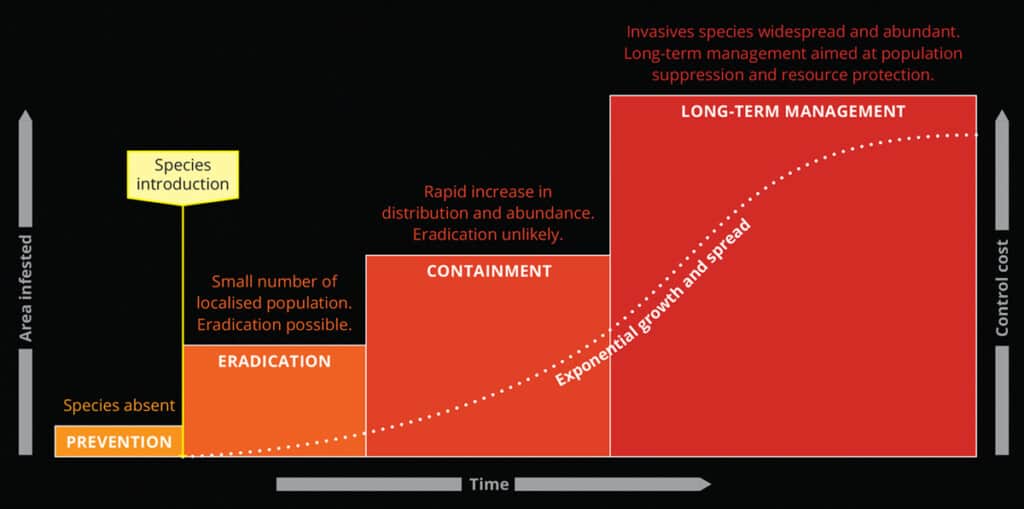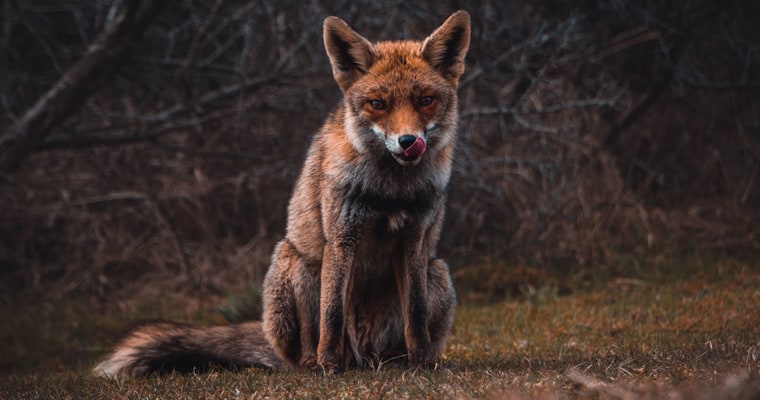How do we go about tackling the challenge of invasive species?
To assess the rising harm and costs of an exotic species, we use the invasion curve – a graph of the invasion process depicting this impact being had as the species becomes established and spreads within its new environment.
After a new species establishes, there may be a period of days, months or even decades during which it is possible to eradicate it – before it becomes too widespread. If a species can’t be totally removed, it may still be possible to contain it, preventing it from spreading to the rest of its potential habitat across Australia.
The benefits of preventing an invasive species from establishing, or eradicating it before it becomes widespread, are many tens, if not hundreds, of times greater than the ongoing costs to Australia if we do nothing and allow it to spread.
Invasive species is a wicked problem. The large number of potential interventions reflects the complexities of biosecurity due to the plethora of invasive species and native species at risk, and the multitude of high-risk human activities that must be managed.
This is why we exist and why the work we do is so urgent — and we could not do this work without the generosity of our supporters.





